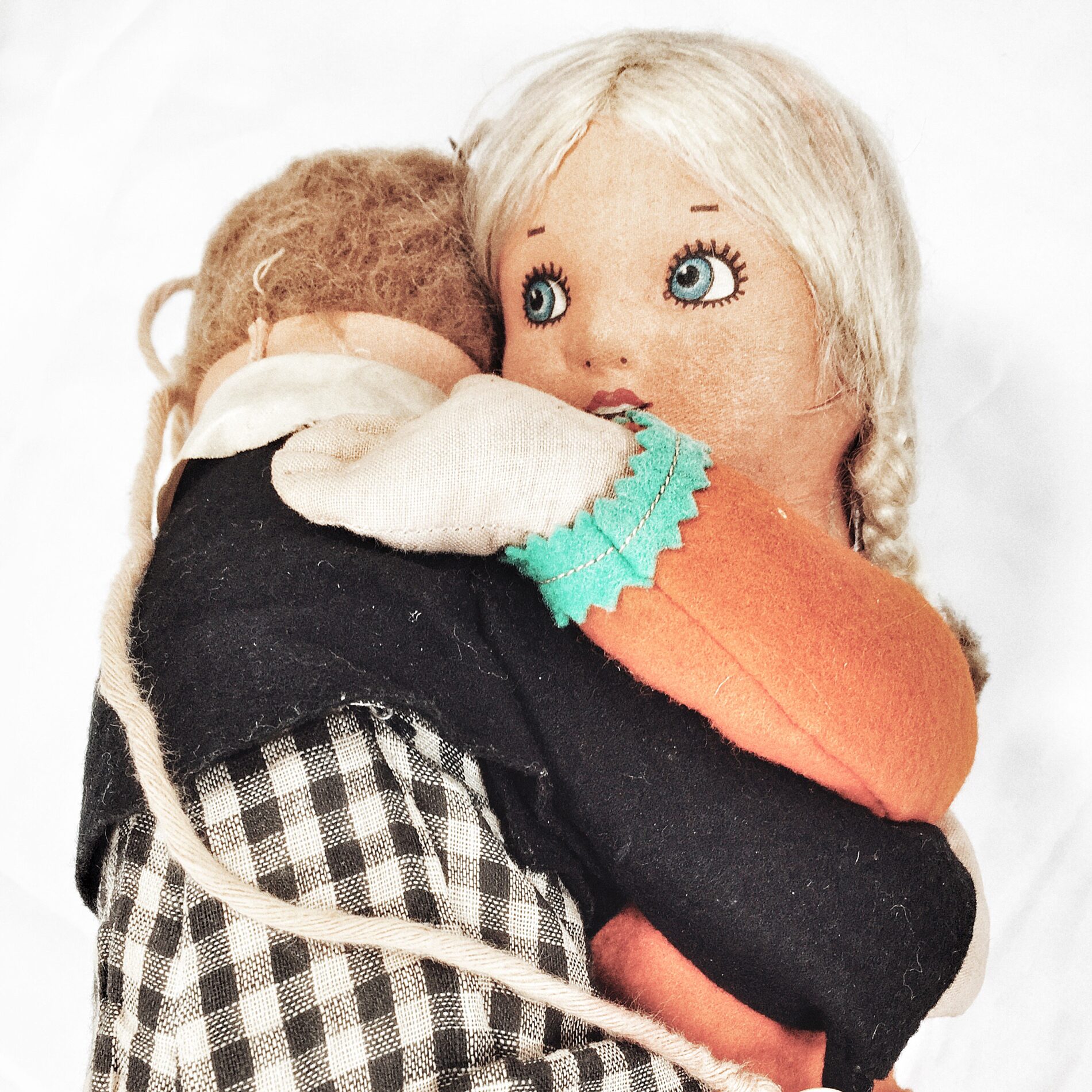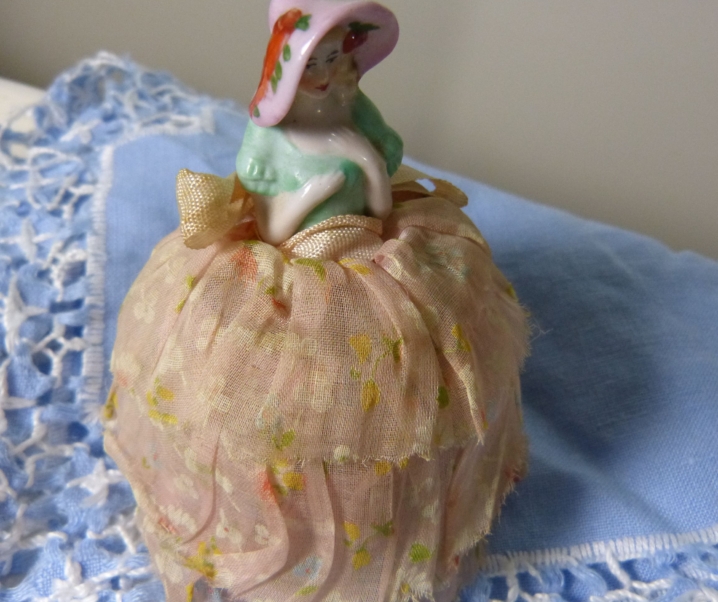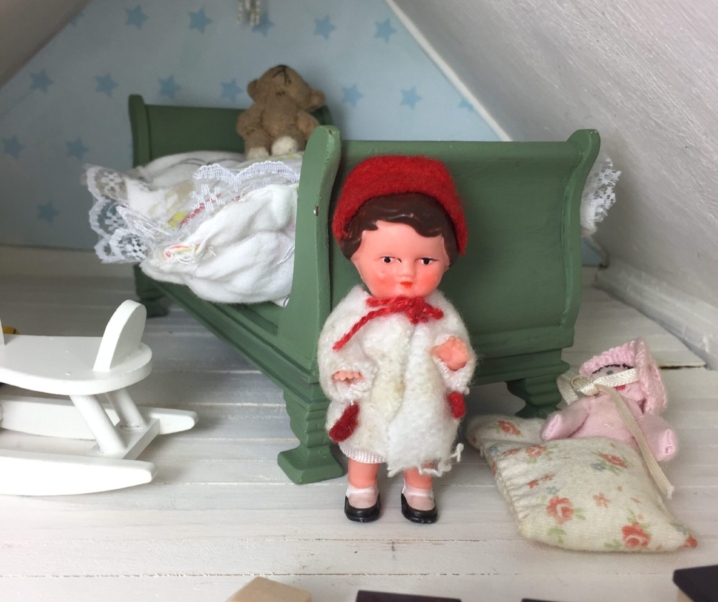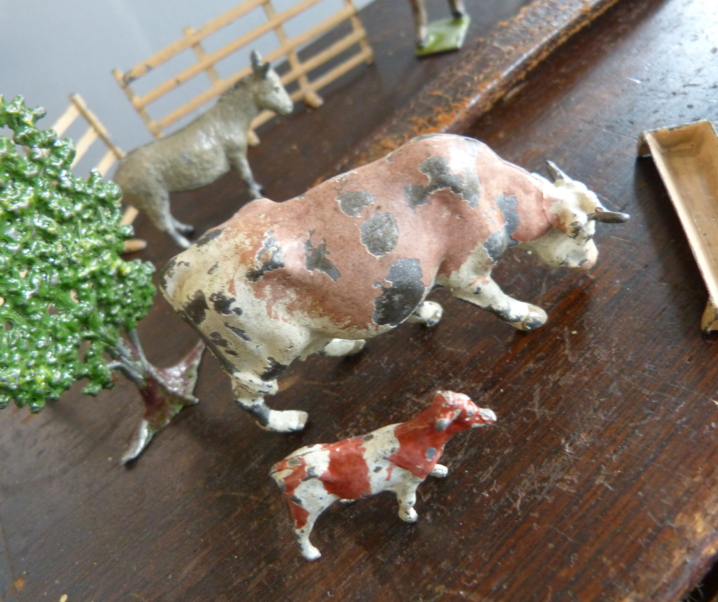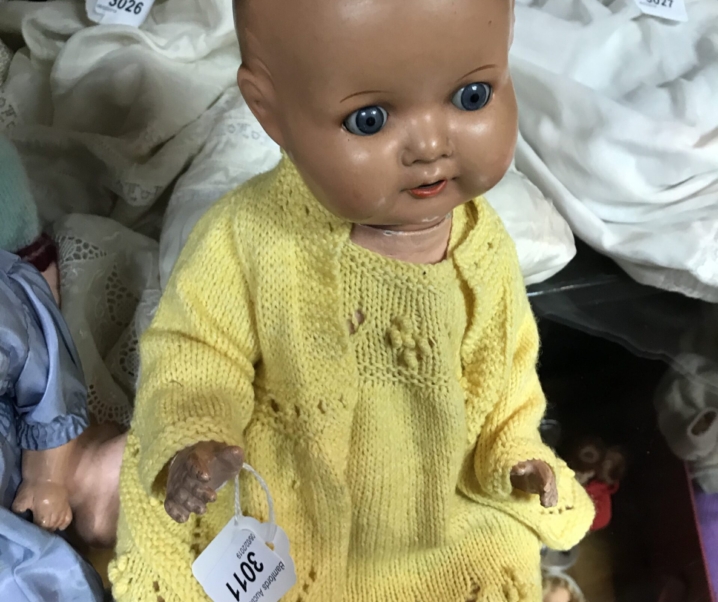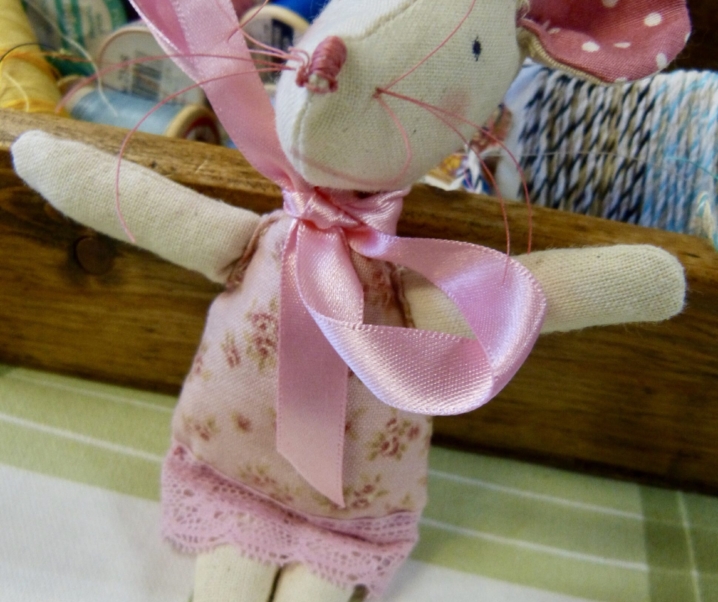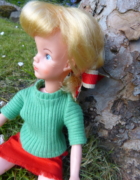You have to admire Henry Samuel Dean; an early 20th Century publisher and printer who decided to make hygienic, safe and unbreakable books and toys for naughty children who ‘wear their food and eat their clothes’.
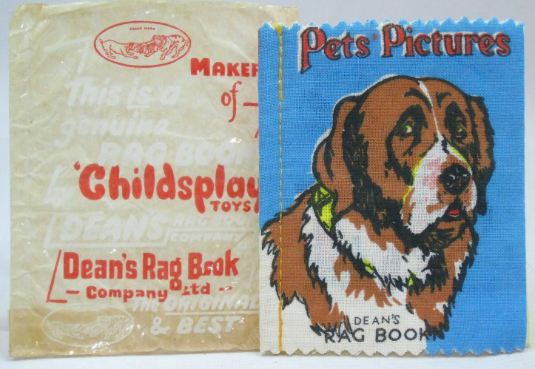
An off-shoot of celebrated publishers Dean & Son (the family firm made their fortune selling pop-up books for children) Dean Rag Co Ltd was launched to produce the world’s first ‘practically indestructible’ book. On December 18th 1903, Henry Dean filed a patent for ‘books with cloth leaves’.
Cloth books seem common place today – a quick search on Amazon reveals hundreds of variations – but in the early 20th Century a chewable, washable books was a truly innovative, inspiring idea.
The first cloth book was called ‘The Life of a Bold AB on his ship in the rolling C’. This was an educational book to teach babies and toddlers their ABC. According to Stella and Rose books “The subject matter hardly changed and included alphabet and object books, books about animals, trains, nursery rhymes and simple stories. Text was kept to a minimum.”

Early illustrators included John Hassall, HGC (Gracie) Marsh Lambert and Hilda Cowham. Hilda Cowham, born 1873, was one of the first women illustrators of Punch. Hilda became celebrated for her work on children’s books which featured sweet, round faced cherubs engaging in play or learning with mother.

In other words, they were world’s away from real life, dirty-faced tots Deans Rag had in mind when they asked artist Stanley Tyreman Berkeley to devise the ‘fighting dogs tearing a book apart’ logo.
One of Dean Rag’s slogans was ‘Wear ever – tear never’. No matter children decided to do with their books – and whatever they chose to smear on them – they were difficult to deface and easy to wash.
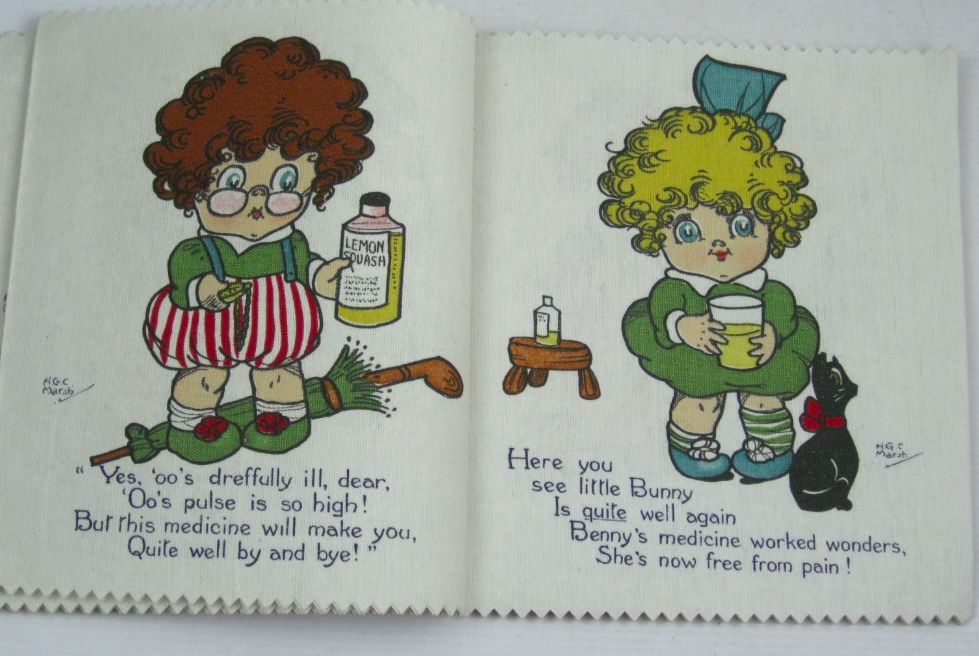
Value; A few of these early ‘quite indestructible’ books are around today. Stella and Rose’s online division of the Hay-on-Wye bookshop have a selection of Dean’s Rag books which start at £18 – the asking price depends on condition, scarcity and age. At the other end of the scale, the bookshop listed a copy of Benny and Bunny from 1916 for £84.
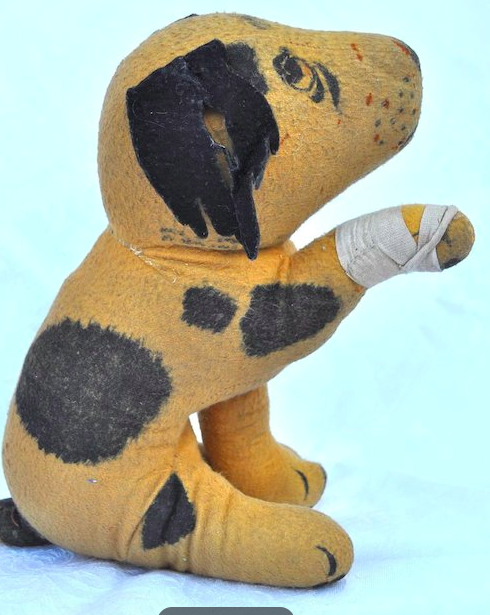
Dean Rag Co Ltd Toys
Inspired by the success of the books, the company began to make ‘spin-offs’ – cloth toys inspired by the books or popular fictional characters of the day.
Popular doll figures included Alice in Wonderland, Peter Pan and Wendy and Mickey and Minnie Mouse – made under licence from Disney. By 1932, a catalogue was sent to every cinema manager in Great Britain to promote the Mickey Mouse merchandise. It was aimed at youngsters who, having watched the cartoon, would surely want to join the Mickey Mouse Club and own a soft toy.
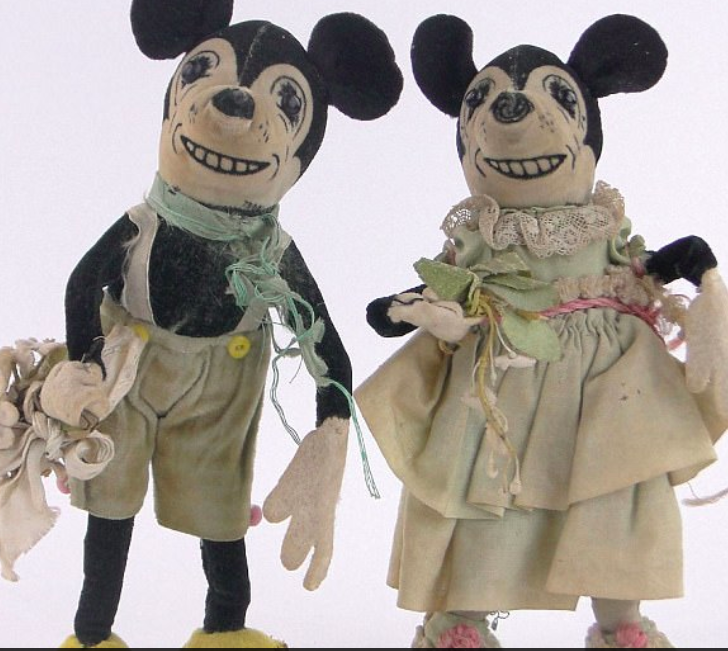
To give an idea of the scale of the business, the Deans Rag Book Co advertisement says; “Well over a million patrons of Mickey Mouse cartoons have shown that they have more than a passing interest in his wonderful personality as they have bought toy”.
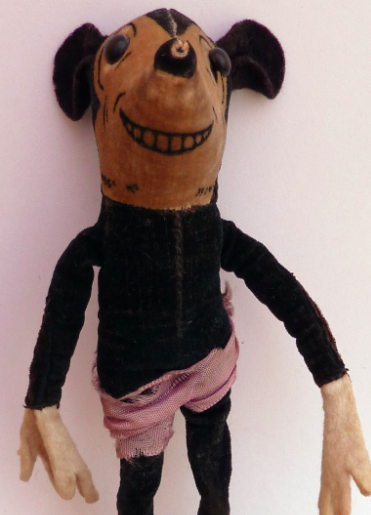
The ‘million patrons’ included one very special little girl. In 2017, The Daily Mail reported that an East Sussex auction house had listed a set of toys played with by Queen Elizabeth (they were given to her nursemaid to pass onto her own children). The dolls included a set of Mickey Mouse and Minnie Mouse characters plus clothes.
Value; Even if your Mickey Mouse didn’t belong to a future queen, the figures are highly collectible; expect to pay between £60-300 for vintage toys in the ‘Disney’ range.
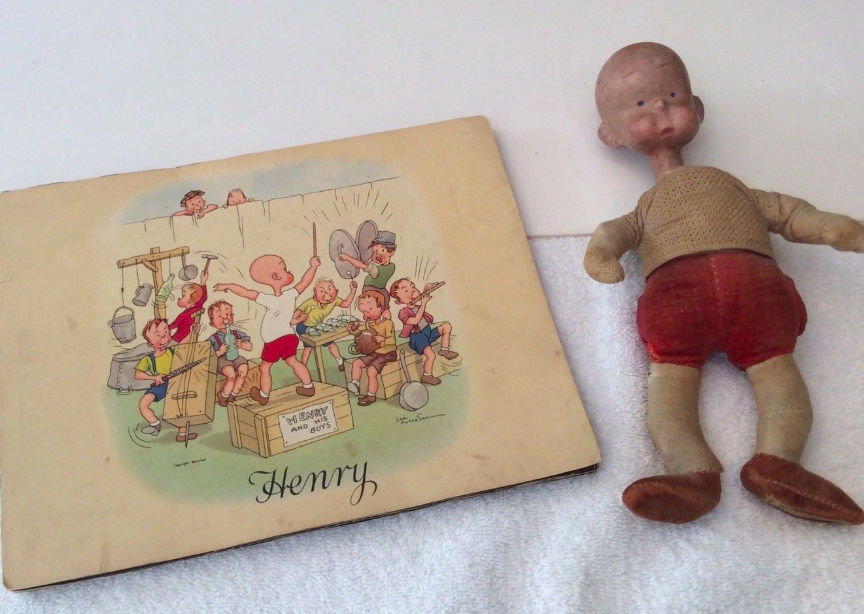
Little Henry
Little Henry (above) was a hugely commercial Deans Rag Book Co ‘tie-in’. Dating from the late 30s, Henry – based on a syndicated cartoon strip by Carl Anderson – became the star of a series of ‘Kensita’ cigarette cards.
Hairless Henry and his boys appear to be an early forerunner of the Bash Street kids (1950s) – rampaging through the streets and causing noisy mayhem. The selection of three albums, a cigarette case and the hard-headed (composite) soft-bodied doll realised £125 when it was sold on eBay in March.
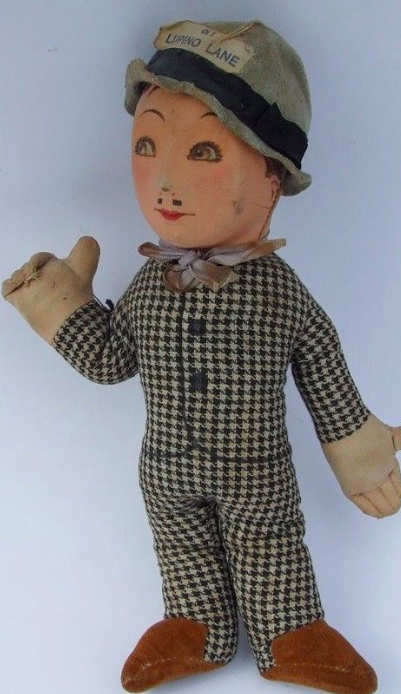

In 1920, the company was the first to produce pressed, moulded, three-dimensional doll (made by pressing wet material (like felt) onto a mould and could be printed upon once dry. These Tru to Life rag dolls included children (those in Victorian/national costumes were popular) and animal toys like monkeys and dogs.
Value; Sadly, the doll market is not what it once was. When a sweet little 1940s Dean’s Rag Book Co Dutch boy doll (see left) came up at auction in Boston, America, in 2006 his estimated value was $300-500.
He sold for a disappointing $176.
But collectors will pay much more for the early dolls. A Betty ‘Oxo’ advertising doll sold for £60 on eBay in March and a 1920s Dutch girl for more than £500 (this is the exception – not the rule). Anything related to Disney or other recognised fictional characters will boost the value of your toy. Eugene the Jeep Popeye character (circa 30s/40s) sold for £300 on eBay recently.
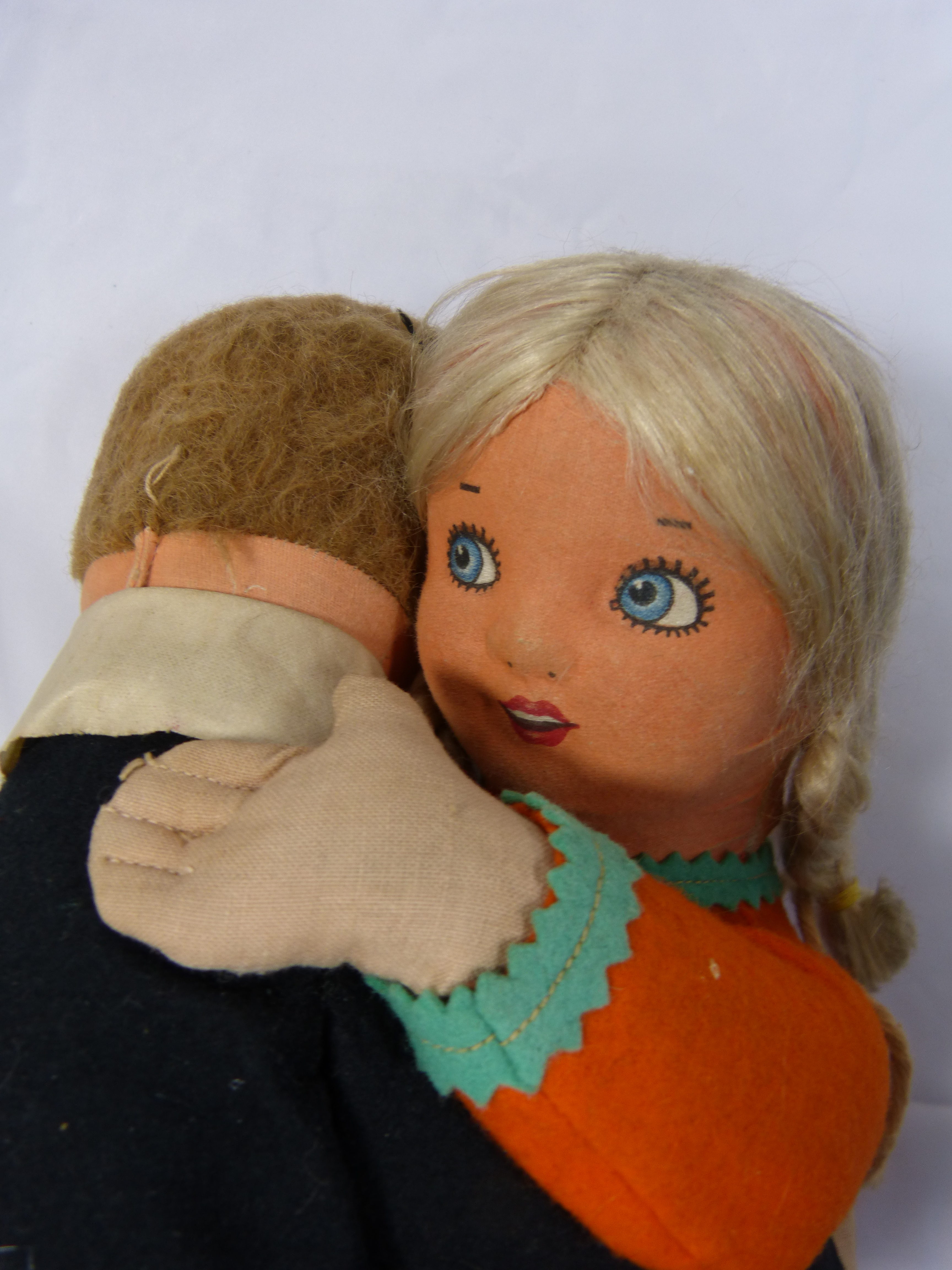
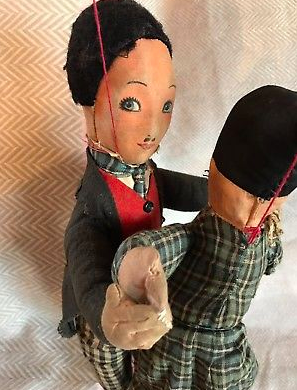 Jean and Peter dolls
Jean and Peter dolls
Which bring me round to my own little purchase. The dancing dolls were made by the Dean’s Rag Book Co in the 1930s. The doll figures are sewn together (you do see figures which have been surgically parted with scissors) and operated from a golden string. If you bob the the string up and down, the rag dolls will ‘dance’.
Value; The dolls had an auction estimate value of £60-80* but – according to ‘200 Years of Dolls: Identification and Price Guide (Herlocher) – my dolls would have been worth between £300-600 at the height of the doll collecting boom of the 80s/90s. A better bet by far is the ‘Charlie Chaplin’ dancing doll – the pair on the left are on sale for £350.
*I bought the dolls for £34 but sold them for a disappointing £25; I wasn’t dancing…
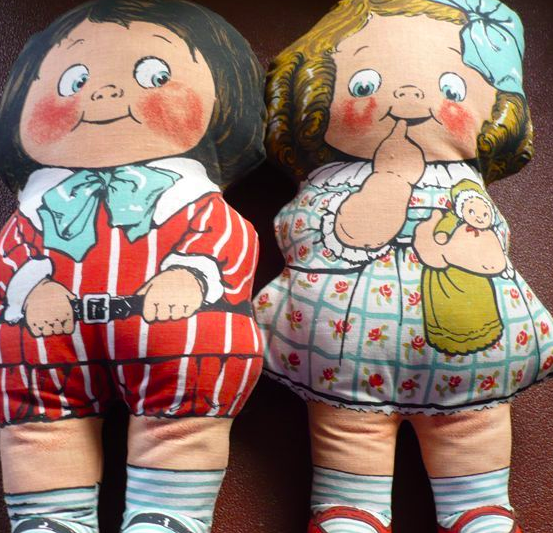
 Knockabout dolls (see above) were printed onto sheets which you could cut-out and sew. According to Doll Reference website, variations included Pearly, a non-pc Golliwog, Peggie and Teddie (reprinted in 1980) and Miss Moppietopp from 1914.
Knockabout dolls (see above) were printed onto sheets which you could cut-out and sew. According to Doll Reference website, variations included Pearly, a non-pc Golliwog, Peggie and Teddie (reprinted in 1980) and Miss Moppietopp from 1914.
Value: Expect to pay around £10-50 depending on condition and scarcity of your cloth dolls. If you wish to reach the top end of those valuations; look out for the little Betty Boots (left) designed to be sold by Boots (the Chemist).
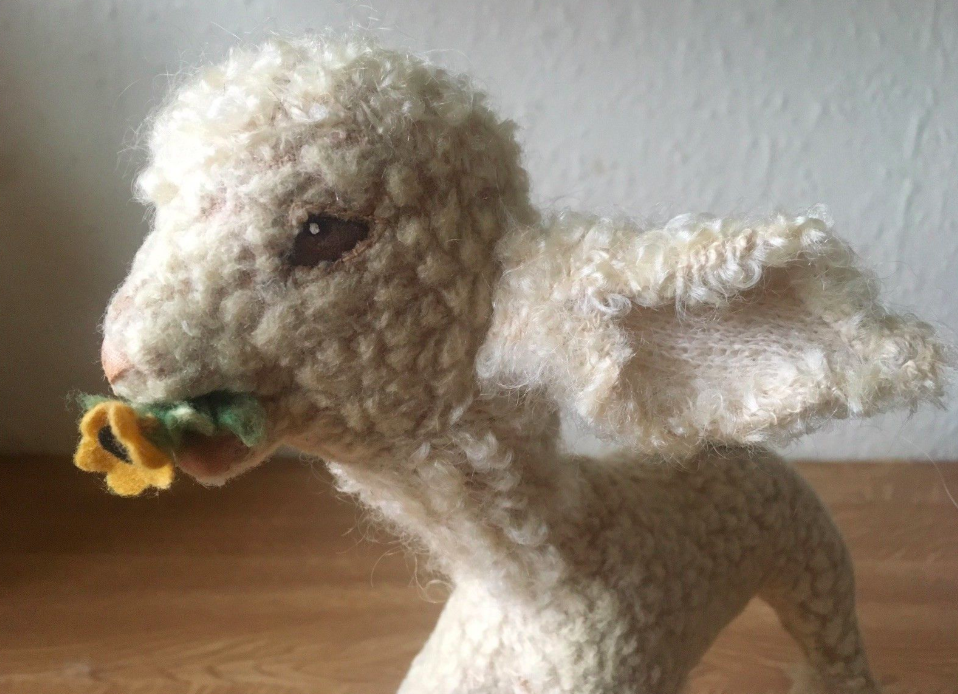
Teddy bears
While most people are familiar with Steiff, Chiltern and even ‘Beanie Baby’ – Dean’s Rag Book Co made the first teddy bears in the UK. They started to make unbranded bears in 1905 and labelled bears from 1915. The V&A, states that firm was at the forefront of bear manufacturing throughout the 20s and 30s.
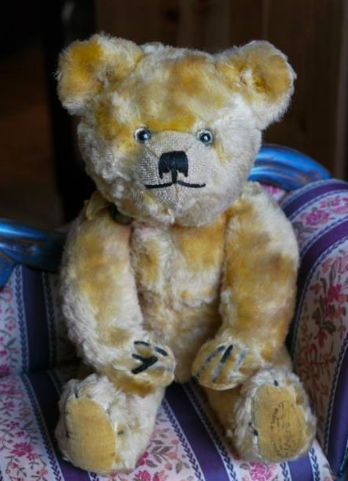
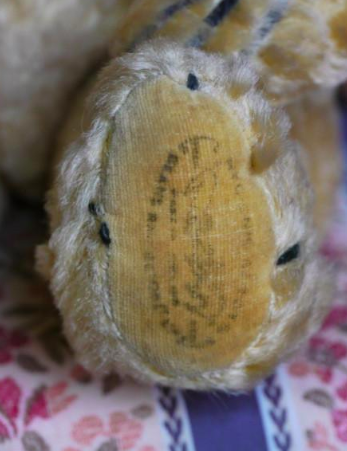
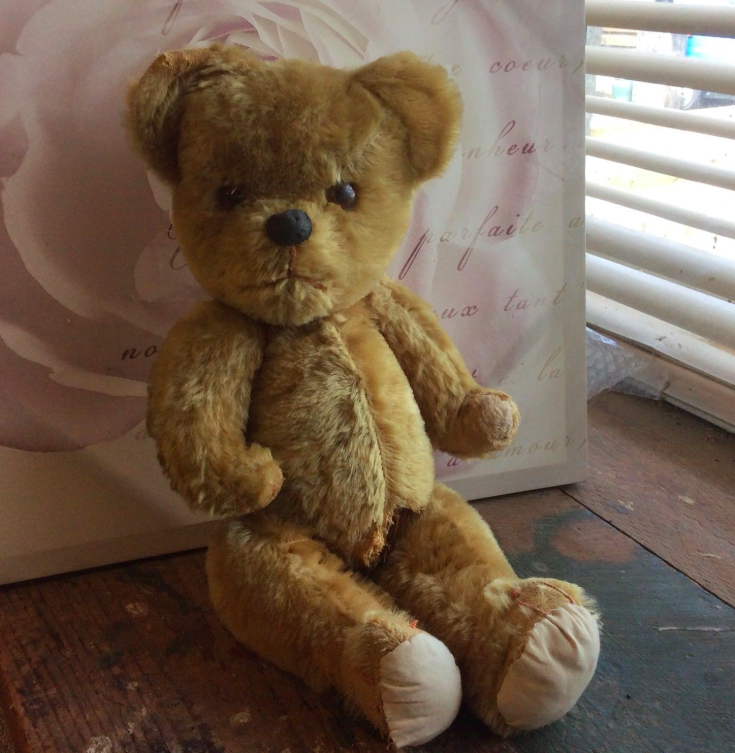
According to Teddy Bear Museum website, early bears can be identified by;-
The fighting dogs label, ink stamp or tags (very early bears had black ink stamps on their feet)
A silver button in the ear (an identification button used in the 20/30s which is very rare)
short thick set curved arms
stocky legs
triangular heads with flat ears or round heads with ears set on the sides (known as ‘mouse’ eared)
Most of the bear are fully jointed and made of mohair
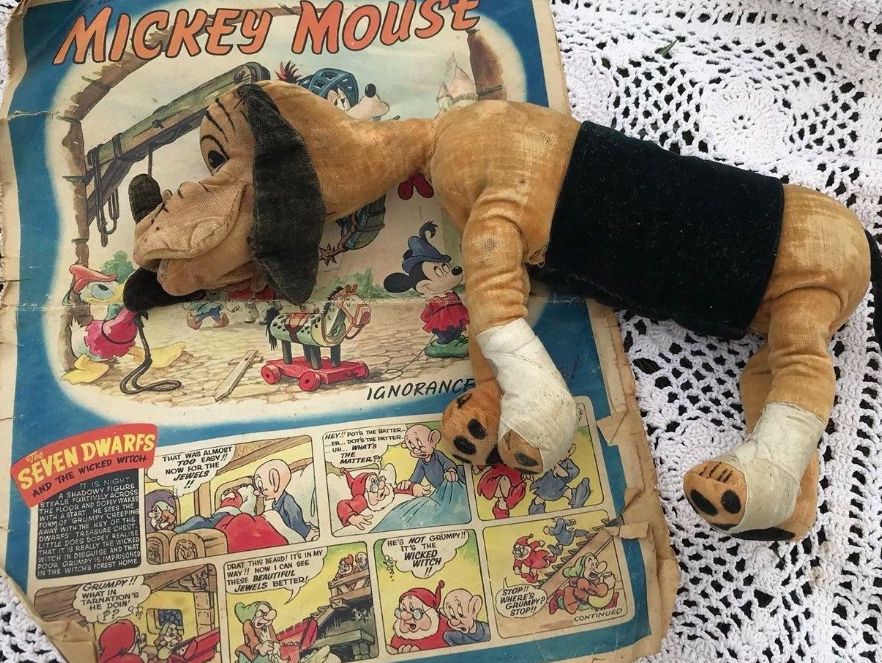
Totally Teddy Bear website will give you an insight into the popular ‘Kuddleme’ range which was produced after the First World war. Golden teddies were made in 1949 to celebrate the birth of a polar bear cub at London Zoo. Look out for the lush bears, often wearing velvet clothes, designed by Sylvia Willgoss in the 1950’s. It was Willgoss who designed the fabulous chimp which became a best-seller.
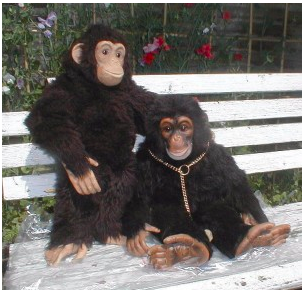 Value; They are not as well known as Chiltern and Merrythought. You can buy vintage bears for under £20. Prices increase for older, rarer bears – especially those related to well-known ‘characters’. Recent sales include £55 for a small ‘Pa Coney’ 1930s rabbit, £157 for a Minnie Mouse (30s) and £160 for a rare 1930s Pluto dog.
Value; They are not as well known as Chiltern and Merrythought. You can buy vintage bears for under £20. Prices increase for older, rarer bears – especially those related to well-known ‘characters’. Recent sales include £55 for a small ‘Pa Coney’ 1930s rabbit, £157 for a Minnie Mouse (30s) and £160 for a rare 1930s Pluto dog.
Riches to rags….the final chapter in the Dean’s Rag Book story

Sadly, the fun was not to last. Cheap imports from the Far East brought about the demise of many giants in the British toy industry. Not even an injection of ideas from Chad Valley designers (brought in to make a cheaper bear under the name Gwentoys) could stop sales from tumbling throughout the 1970s. In 1986, Deans was bought by Plaintalk, a toy and gift exporter. By 1988, the company went into liquidation.
in 1990, former employee Neil Miller brought the trademark and ‘fighting dogs’ logo and attempted to re-establish the brand. Neil decided to concentrate on producing high quality, artist designed, limited-edition bears (typically 20-100 units only) and established a collector’s club which boasted 4,000 members.
Dean’s Apple Pips (miniature bears standing at 4 inches tall) were said to be named after the apple trees at the Dean’s family home in Herefordshire. Hoople (the bears were named after apple varieties) had a retail cost of £39.
It was too little – too late. According to the BBC, the bear factory (based in Pontypool) closed in 2005 and the bears (some with a price tag of £600) were auctioned off in Hereford without any reserve prices. Walesonline later reported the sale of the stock achieved £25,000.
A limited number of bears were made until 2015 when production stopped for good. Let’s Talk Teddy Bears website claims these limited edition bears are ‘Retired – but not forgotten – Dean’s bears live on as highly prized collectors’ items’.
If you have one of the bears – hold onto it. On eBay, a limited edition ‘Ruthie Goes to London’ realised just £31 (typically selling for between £10-40). It’s almost impossible to predict antiques of the future but these bears were so well-made, it’s worth taking a punt….
*When collecting anything always bear in mind that valuations fluctuate so only buy because you love it.
Fancy reading more?
For a wonderfully detailed of Dean & Son Publishers, visit Vintagepopupbooks.com


